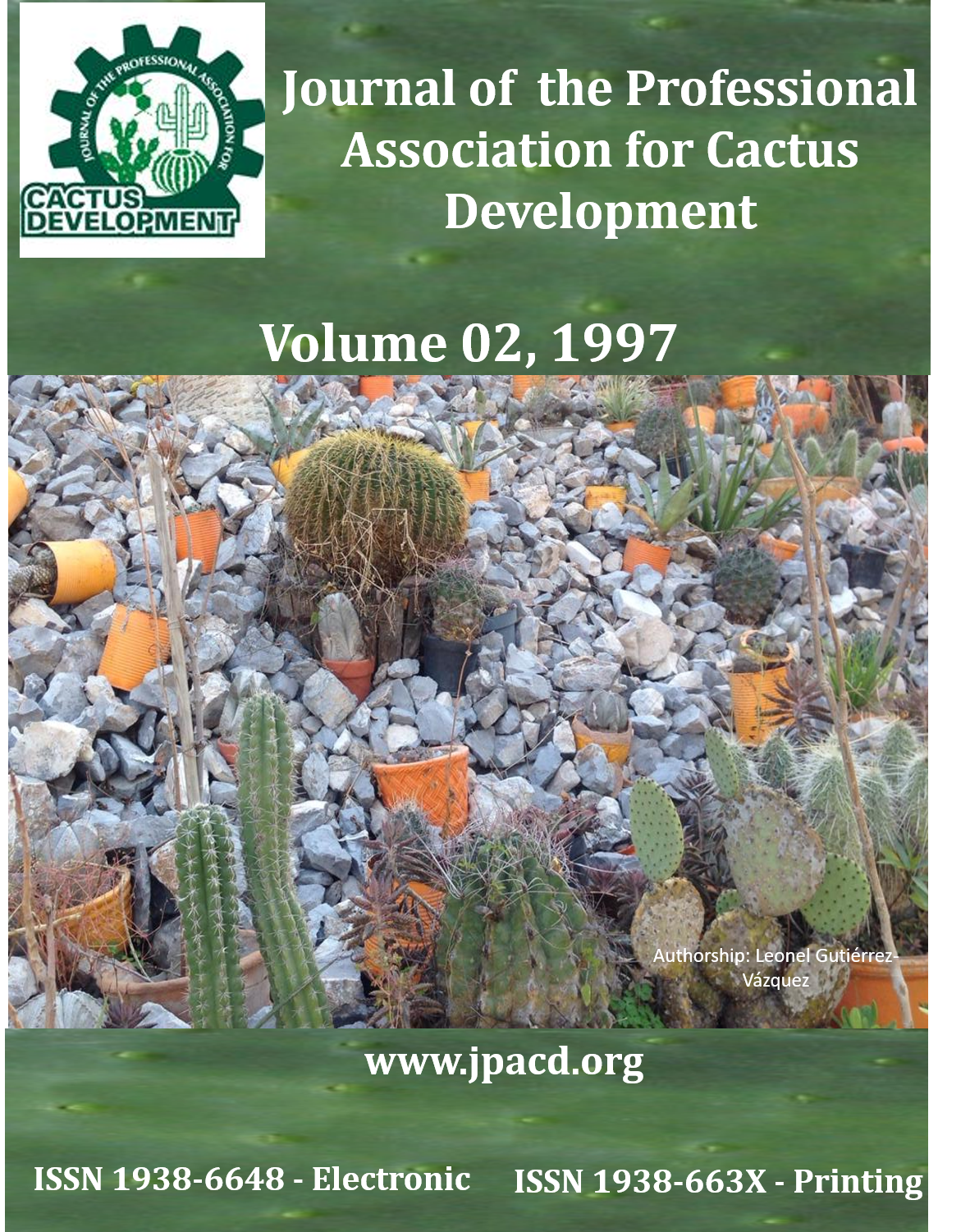Ecological Characterization of Opuntia Clones in South Texas: Implications for Wildlife Herbivory and Frugivory
DOI:
https://doi.org/10.56890/jpacd.v2i.172Resumen
Prickly pear cactus (Opuntia spp.) is a common floristic component of arid and semiarid
ecosystems of the southwestern United States and northern Mexico. Not surprisingly, in many
of these regions it can be one of the dominant life forms, due primarily to its high water-use
efficiency. Because of this dominance it can be an important element of wildlife habitats both
as structure (shade, shelter, nesting substrate) and food for many mammal and avian species.
In addition, it is utilized by other vertebrates (reptiles) and many invertebrates. Its structure
provides shade and resting habitat for many birds. It can provide nesting substrate for birds,
such as cactus wren, curve-billed thrasher and many other species. The importance of cactus
structure for other wildlife species (e.g., small mammals, deer, reptiles) is not well documented,
with few exceptions (e.g., woodrats Neotoma spp). As a food item, cactus cladodes are consumed
by wildlife (deer, javelinas, lagomorphs) and livestock and are of considerable importance during
some seasons to white-tailed deer (Odocoileus virginianus, Everitt and Gonzalez, 1979) and
javelinas (Hellgren, 1994). The fruits are also consumed by a large number of animals including
mammals (javelinas, some carnivores), birds (thrushes, woodpeckers), and at least one reptile
(tortoises).
##plugins.generic.pfl.publicationFactsTitle##
##plugins.generic.pfl.reviewerProfiles## N/D
##plugins.generic.pfl.authorStatements##
Indexado: {$indexList}
-
##plugins.generic.pfl.indexedList##
- ##plugins.generic.pfl.academicSociety##
- Journal of the Professional Association for Cactus Development
- Editora:
- Professional Association for Cactus Development




